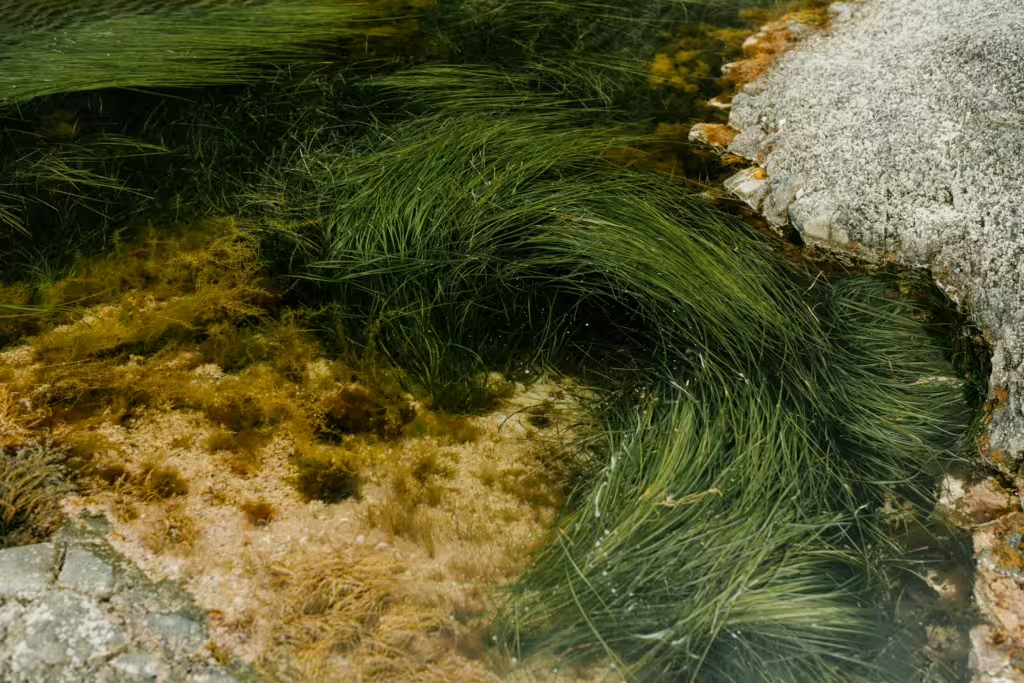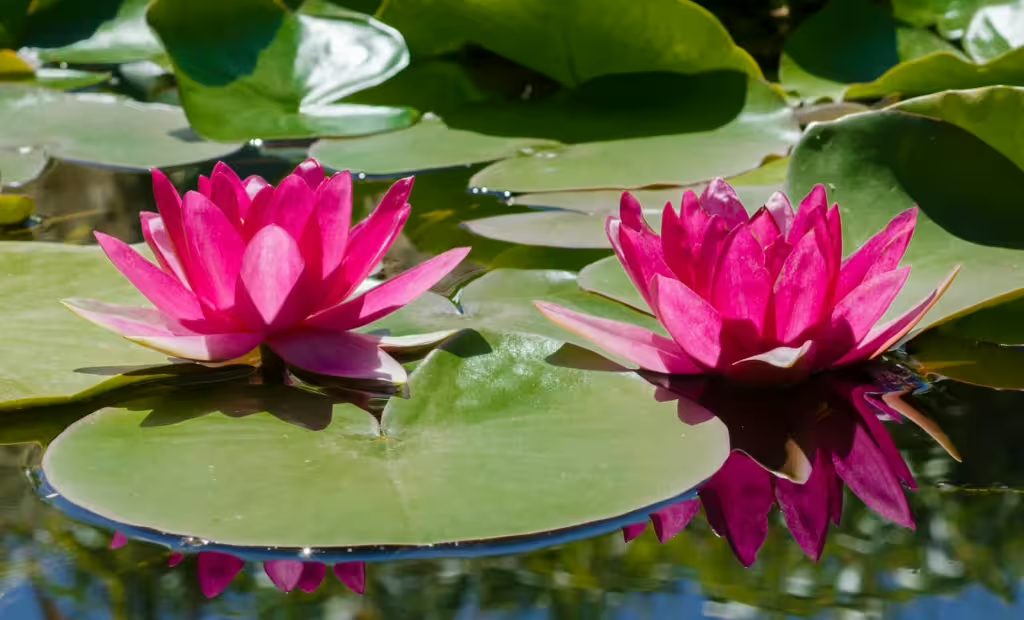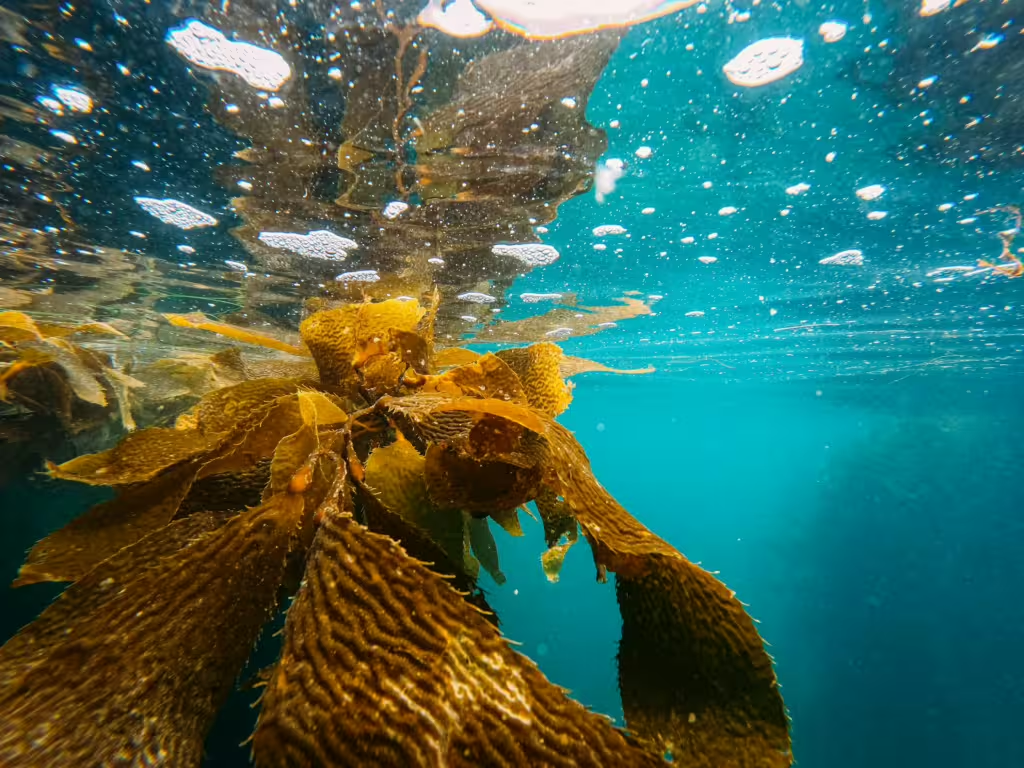We’ve all been treated to the amazing animals that dwell in the undersea world that abuts our own terrestrial one. Television shows and documentary specials like Planet Earth and Blue Planet have shown us a world that few people had gotten to witness before the 21st century. Yet, as breathtaking as all of these aquatic creatures are, none of them would even be here if not for the equally incredible aquatic plants that make marine and freshwater ecosystems hum.
Aquatic plants play a vital role in maintaining the health and balance of underwater ecosystems, but even with everything we know about these interconnections, there is much we still do not understand about the fascinating realm that exists beneath the water’s surface. From vibrant corals and schools of fish to unique plants that thrive only in aquatic environments, the underwater world is teeming with life, and each living thing works together to create a sort of aquatic homeostasis.
The plants themselves represent a host of remarkable organisms that provide habitat and food for countless species, improve water quality, and regulate the aquatic environment in unseen ways; often affecting the world above as well.
In this article, we will take another deep dive into the wonders of the underwater world. Our focus will be on underwater flora, including seagrasses, water lilies, and a diverse array of submerged, floating, and emergent plants. We will explore the unique adaptations that allow these plants to survive, while examining their innate ecological significance to both marine ecosystems, and our planet’s ecosystem at large.
What Are Aquatic Plants?

Aquatic plants, often referred to as hydrophytes by the scientific community, are species that have adapted to live and thrive in water. Hydrophytes are plants that specifically inhabit freshwater and marine environments, ranging from rivers and marshes to oceans and lakes. Aquatic plants are often categorized into several types based on their growth habits:
- Submerged plants: These plants live and grow fully underwater and include kelp and eelgrass.
- Floating plants: Duckweed and other types of free-floating plants that live mainly on the water’s surface.
- Emergent plants: You see these a lot in marshes, these plants are rooted underwater with leaves or stems above the surface. Cattails and reeds are emergent plants.
No matter the size, shape, or rooting behavior, the point is that aquatic plants have evolved all sorts of interesting and highly-specialized adaptations to survive in aquatic or semi-aquatic states. These adaptations include things like flexible stems, air-filled tissues for buoyancy, and the ability to perform photosynthesis in low-light conditions.
Seagrasses: The Ocean’s Meadows
Seagrass is not just one particular species of marine plant, it is many different types of flowering plants that live submerged in shallow coastal waters. Seagrasses are often referred to as the “lungs of the sea,” just as rainforests are often referred to as the “lungs of the world.” That is because, in both these cases, these plants play a crucial role in maintaining some of the planet’s ecosystems. For seagrass, it is specifically marine ecosystems, for rain forests, it’s the entire oxygenated atmosphere. This is not to be confused with seaweed, as seagrasses are true plants, complete with the whole shebang: roots, stems, flowers, and seeds.
Ecological Importance of Seagrasses
Carbon Sequestration: Seagrasses, like most plants, capture carbon dioxide and store the resultant carbon in their biomass and the sediment beneath their roots. This action helps to mitigate the ever-present, ever-worsening problem of climate change by reducing atmospheric CO₂ levels.
Biodiversity Hotspots: Seagrass meadows, which are similar to terrestrial meadows in many ways, provide a similar function in the marine world. These places provide habitat and shelter for numerous marine species, including juvenile fish, crustaceans, and even a few endangered species like seahorses and dugongs.
Erosion Control: The extensive root systems of seagrass meadows help to stabilize sediments, reducing erosion and improving water clarity.
Key Seagrass Species
- Eelgrass (Zostera marina): This variety can be found in temperate and subtropical regions. Eelgrass forms dense underwater meadows that support marine biodiversity.
- Turtle Grass (Thalassia testudinum): Common in the Caribbean, turtle grass is so-named because it is a vital food source for marine herbivores like sea turtles.
Sadly, like so many species and ecosystems on the planet today, seagrass habitats are under threat due to human beings. Pollution, coastal development, and climate change are all having dangerous and long-lasting effects. Still, conservation efforts are in place in many marine protected areas (MPAs) and these types of initiatives are essential for protecting these vital ecosystems.
Water Lilies: Jewels of Freshwater Ecosystems
Impressionist painter Claude Monet once spoke of water lilies saying, “Water Lilies’ is an extension of my life. Without the water the lilies cannot live, as I am without art.” Water lilies were among his most painted subject and he wasn’t the only one to be awestruck and inspired by their singular beauty. These amazing hydrophytes are among the most iconic aquatic plants in the world, easily recognized by their striking flowers and floating leaves. These plants belong to the family Nymphaeaceae and thrive in ponds, lakes, and slow-moving streams.
Adaptations of Water Lilies
Water lilies have adapted brilliantly to life in water in several interesting ways:
- Floating Leaves: The broad, flat leaves of water lilies are adapted so that they maximize sunlight absorption. This allows them to thrive in water even when there is limited light penetration.
- Long Stems: The long stems of water lilies connect the leaves to the plant’s roots, which are anchored in sediment below the water’s surface. Stems contain air spaces that facilitate oxygen transport.
- Water-Resistant Surfaces: Water lilies have a waxy coating on their leaves that prevents waterlogging.
Ecological Contributions
Habitat and Shelter: Water lilies provide cover for fish and amphibians. This protects these aquatic animals from predators and, if you’ve ever seen a frog on a lily pad, also gives them a chance to rest after a day of swimming.
Water Quality Improvement: By shading the water surface, lilies help control algal growth and maintain oxygen levels. This prevents small waterways from becoming anoxic due to excess algae.
Pollinator Support: The iconic flowers on water lilies attract pollinators like bees and beetles, which furter contributes to aquatic biodiversity.
Popular Water Lily Species
- Nymphaea alba: These popular European varieties are known as the white water lily. It is known for its large, white flowers and may have been a favorite subject of impressionists like Monet.
- Victoria amazonica: This giant water lily lives in the Amazon basin. It is famous for its massive leaves that can support the weight of small animals.
Other Aquatic Plants Essential to Ecosystems

Duckweed (Lemna spp.):
Duckweed is a tiny, free-floating plant easily distinguishable by the dense mats it forms on the water’s surface. This somewhat unassuming plant is actually quite necessary, however, as it plays a critical role in nutrient cycling, absorbing excess nitrogen and phosphorus from the water. Duckweed also provides food for fish and waterfowl.
Hornwort (Ceratophyllum spp.):
Hornwort definitely sounds like something you’d learn about in Professor Sprout’s herbology class. This plant can be found submerged in freshwater lakes and ponds. Though it has no magical properties, hornwort does oxygenate the surrounding water, providing an oxygen-rich habitat for nearby aquatic insects and small fish.
Mangroves:
While not entirely underwater plants, mangroves are nonetheless crucial to coastal ecosystems. Magrove roots extend into the water, stabilizing coastlines, reducing erosion, and providing crucial habitat for marine and terrestrial life.
Lotus (Nelumbo spp.):
These iconic flowers are very similar to water lilies and are culturally significant in many regions. Lotus flowers grow in freshwater environments and contribute to nutrient cycling and water purification.
Bladderwort (Utricularia spp.):
Yet another herbology class project, bladderwort is actually more akin to something out of a Harry Potter novel. This is a carnivorous aquatic plant that has specialized structures it uses to trap small insects and zooplankton. It helps control insect populations in freshwater habitats.
Adaptations of Aquatic Plants
Living in water would present a lot unique challenges for many terrestrial plants. Fortunately, aquatic plants have evolved several adaptations:
Buoyancy: Some water plants possess air-filled tissues, such as aerenchyma, which help keep them afloat.
Flexible Stems and Leaves: Aquatic plants have flexible pieces that allow them to move with water currents without breaking.
Submerged Photosynthesis: Many aquatic plant species have specialized chloroplasts and thin leaves to enable photosynthesis even in low-light conditions.
Root Modifications: Some species, like seagrasses, have rhizomes that help to anchor them in unstable substrates. Others, like floating plants, lack extensive root systems at all.

The Importance of Aquatic Plants
Because they are so highly-adapted to their aquatic environments, many of the hydrophytes on this list are also essential for maintaining the health of their respective ecosystems. At the same time, these plants also support human communities, enhance biodiversity, and provide a range of ecological, cultural, and economic benefits.
Habitat and Food Source:
Aquatic plants form the foundation of many aquatic ecosystems, offering critical habitat and nourishment. Small invertebrates, fish, and waterfowl rely on these plants for survival. Submerged plants, such as eelgrass and hornwort, provide spawning grounds and shelter for fish, while waterfowl feed on seeds, leaves, and roots. Amphibians and reptiles also use aquatic plants for refuge and hunting grounds, highlighting their central role in the food web.
Water Quality Improvement:
Aquatic plants help purify water by absorbing excess nutrients like nitrogen and phosphorus, which are often result from agricultural runoff. This is a necessary process in the modern age because it prevents eutrophication, a condition that leads to oxygen depletion and harmful blooms of choking algae. Species like duckweed and water hyacinth are especially efficient in this regard. These plant are adept at nutrient uptake, making them valuable for water remediation projects.
Climate Regulation:
Climate change is a serious global problem and one of the most effective weapons we have against it’s unrelenting progress has been under our noses all along; well, under the water, anyway. Aquatic plants, like terrestrial forests, play a significant role in combating climate change. Seagrasses, mangroves, and other plants are excellent at capturing and storing carbon dioxide in their biomass and soil. Scientists call these types of organisms carbon sinks because they sink the atmospheric carbon back into the Earth itself. Seagrass meadows actually store vast amounts of carbon in their roots and surrounding sediments, making them crucial for long-term carbon sequestration.
Erosion Control:
Rooted aquatic plants are necessary for stabilizing sediments in rivers, lakes, wetlands, and coastal areas. The roots of these plants hold the soil in place and certain species are particularly good at this. Mangroves and seagrasses are good examples for this erosion control, in that they protect shorelines from the destructive erosion caused by waves, storms, and rising sea levels.
Cultural and Economic Significance:
Particularly beautiful aquatic plants like lotus and water lilies hold deep cultural and spiritual importance in many societies. From an economic standpoint, these plants play several important roles. They are harvested for food, traditional medicine, ornamental purposes, and biofuels, providing livelihoods for millions of people worldwide.
Threats to Aquatic Plants
Despite their importance, aquatic plants face numerous threats, mostly by our own human hands:
Pollution: Nutrient runoff from agriculture and industry causes eutrophication, which reduces oxygen levels and harms plant life.
Habitat Loss: The endless rise of human population has led to unchecked amounts of coastal development, agricultural development, dam construction, and water extraction; all of which destroy aquatic habitats.
Climate Change: Rising temperatures and sea levels, as well as ocean acidification, has had a serious impact on plant growth, animal populations, and distribution.
Invasive Species: Non-native plants, such as water hyacinth, often outcompete native species, disrupting ecosystems simply because they “look nice planted here.”
True Investigator Says…
As you can see, hydrophytes are an essential part of life on Earth. Aquatic plants offer a wide range of ecological, economic, and cultural benefits. Whether it is a vibrant underwater meadow of seagrasses or a serene patch of beautiful, floating of water lilies, these plants are a testament to nature’s unparalleled adaptability. Fortunately for us and the plants themselves, these plants are also resilient. Even in the face of habitat destruction, climate change, pollution, and near-constant environmental changes, they find ways to thrive. Still, it falls to us to help them persist and to mitigate our own negative impact on their ecosystems. If not, future generations may only get to see water lilies in the paintings of the great masters.
Discover more from TrueInvestigator
Subscribe to get the latest posts sent to your email.


